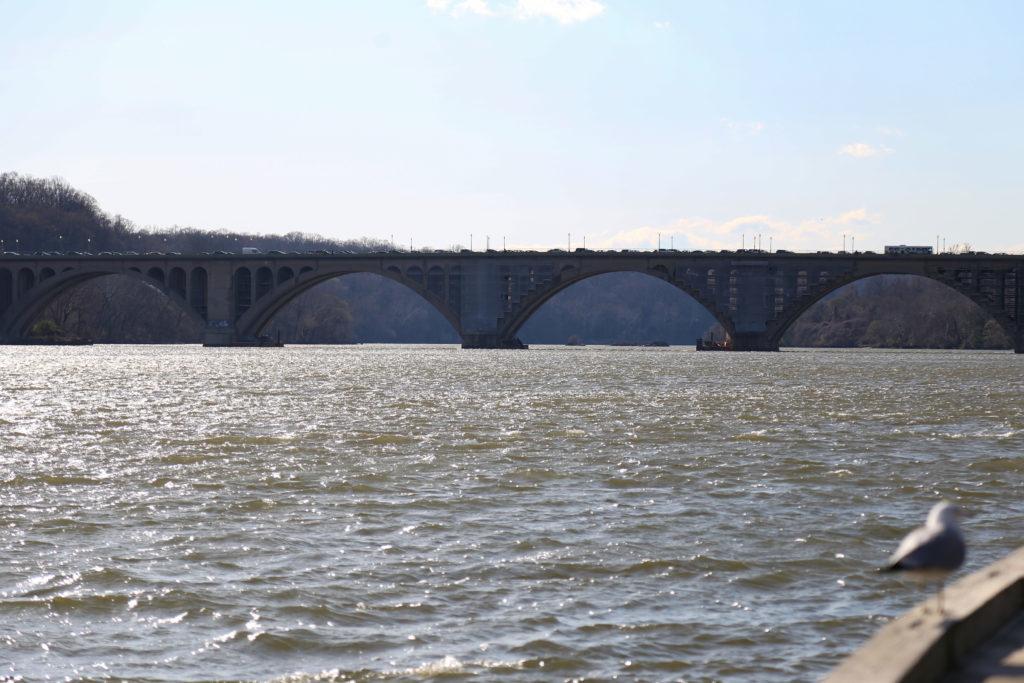The Potomac River is now the cleanest it has been in years, according to a new report.
The Potomac Conservancy, a clean water advocacy group, issued the river a “B” rating – indicating improved pollution levels and healthier river life – in its annual report published last week. Environmental experts said the improved rating is a sign that federal and community conservation efforts are working, and the river could one day be clean enough to swim in.
The conservancy calculated the letter grade based on five factors: the amount of pollution in the river, the presence of native fish populations, the health of the river habitat, the protection of the surrounding land and the river’s accessibility to humans. The “B” rating means that the river has reached healthy levels in 60 to 79 percent of the tested areas, according to the report.
It’s a significant turnaround for the Potomac, which was given a “D” rating by the same group as late as 2011.
Alicia Crawford, a representative of the Potomac Conservancy, said the river previously was “dangerous to even touch” with a putrid smell and algae stretching shore to shore.
“The Potomac really did have a bad pollution problem, looking back 40 to 50 years and before then, so we’ve come a long way to be able to say that it’s safe to recreate on,” Crawford said.
Since the Potomac Conservancy began releasing its “State of the Nation’s River” reports 10 years ago, government agencies and local conservancy groups have improved the quality of the Potomac by decreasing the amount of trash in the river and protecting threatened fish populations, according to the report.
The report cites the return of animals, like bald eagles and dolphins, and an increase in healthy fish populations to the area as evidence of the river’s resurgence.
The effort by District of Columbia Water and Sewer Authority and the Environmental Protection Agency to implement green infrastructure projects, like permeable pavements and infiltration systems, has also protected D.C. waterways from pollution, Crawford said. These changes have significantly reduced the presence of the river’s top three pollutants: nitrogen, phosphorus and sediment.
The river’s recovery has increased its popularity for recreational use because “people aren’t afraid to go out” to explore the Potomac, she said.
“Water quality is getting better, so people are getting more outside and more invested, and it’s kind of a whole cycle,” she said. “Once you’re outside enjoying the river, then you might be more likely to take action and speak up for water quality issues.”
The report also warns of the river’s remaining weaknesses, including the presence of invasive fish species – which can be nearly impossible to eradicate once they have spread through the river habitat – and an increase in polluted runoff. Crawford said urban runoff – polluted rainwater that washes into the river from stormdrains – is growing “rapidly as communities around the Potomac continue to grow and develop.” Other major sources of pollution, like agricultural runoff, are decreasing, she said.
Julie Lawson – a director of the Office of the Clean City in the mayor’s office, which works to reduce pollution in the District – said laws like the tax on plastic bags and the ban on styrofoam foodware have also led to a sharp decrease in the amount of plastic pollution in the Potomac, including a 72 percent reduction in plastic bags found at stream cleanups.
Her department has taken measures to encourage people to pick up litter and prevent trash from ending up in the river, she said.
“A significant portion of it comes from people dropping litter or throwing it out of their car as they come and go and then once it’s on the ground, it washes down the storm drain and in two thirds of the city, it’s going to go directly from the storm drains into the rivers,” Lawson said.
Laura Cattell Noll, a program manager of the Alice Ferguson Foundation’s Trash Free Potomac Watershed Initiative – which seeks to mitigate the effect of trash on the D.C. region – said D.C. residents have been littering less frequently in recent years especially after the government started putting a fee on plastic bags.
Noll said residents need to become more engaged in the Potomac’s health, participating in activities like cleanups and educational outreach and supporting clean water policy to allow the Potomac’s condition to continue to improve.
“Humans are the source of all pollution in the Potomac River and can be the solution as well,” she said. “So how can we each think about the individual choices we make on a daily basis that could help protect the river that we love and, it turns out, the water that we drink?”





